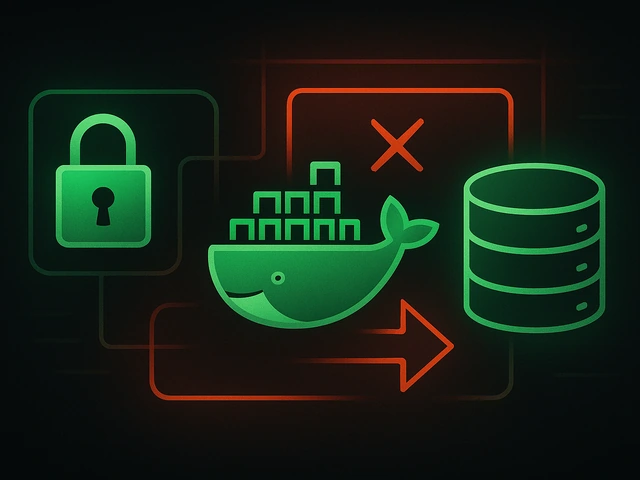
In the previous article, we considered several of the most popular operating systems that are usually chosen for installation on VPS servers. And today we want ...
3v-Hosting Blog
10 min read

Source: Unsplash
Web hosting has come a long way since the early days of the Internet. Websites and online applications have become more complex and user expectations have risen to unprecedented levels. However, traditional web hosts are struggling with these demands – they’re just not cutting it anymore. But that’s where cloud and edge technologies come in: this powerful combo is changing everything we thought we knew about hosting sites. In this article, we’ll take a look at how web hosting has developed over time and discuss why cloud and edge computing are becoming so popular.
Shared servers, dedicated servers, and virtual private servers (VPS) – were the main options for hosting websites for many years. Shared hosting entails many sites using one server’s resources; when traffic gets heavy, performance tends to suffer accordingly. On the other end of the spectrum is dedicated hosting, which gives one site its server for optimal performance at an increased price point.
VPS performance takes after both shared and dedicated by giving users their partition on a single server but at a lower cost than having their very own hardware. Nevertheless, these older systems aren’t without flaws either – scalability being one of them: upgrading from lesser machines can be expensive as well as inconvenient when your site starts growing fast enough; downtime coupled with maintenance issues also undermines UX which directly affects businesses’ bottom line too often than not thus prompting need for improved host technologies.
According to Precedence Research, the global cloud services market is experiencing significant growth, with a projected value of $2.19 trillion by 2032, driven by a compound annual growth rate (CAGR) of 17.10% from 2023. Cloud hosting is a completely different method of web hosting. Normally, websites are held in one location on one server. On the other hand, cloud hosting operates through a network of interconnected servers that can be located anywhere.
The most attractive attribute of cloud hosting is its scalability. Web pages can be easily expanded or reduced according to demand without changing any physical hardware. Elasticity like this is particularly useful for businesses that experience seasonal spikes in traffic or grow rapidly.
In terms of cost saving, the pay-as-you-go model adopted by cloud hosting providers can help companies save substantially on their bills. Start-ups and small enterprises with a tight budget for dedicated servers benefit the most from this approach.
Amazon Web Services (AWS), Google Cloud, Microsoft Azure, et al. provide high levels of reliability through redundancy. This means data gets copied on several servers located at different places thus ensuring quick recovery during server failures besides keeping downtimes minimum.
Netflix is an example that portrays real-world impacts brought about by cloud migration for large-scale streaming services. Performance was indeed improved, but more importantly, Netflix became effortlessly scalable across continents, with millions streaming simultaneously after moving to AWS infrastructure.
Traditional hosting has limitations. Therefore, many of these were addressed by cloud hosting; however, it didn’t fix all problems, such as latency. This is where edge computing comes into play. To cut down on processing time and enhance performance, data needs to be closer to the user.
Edge computing has emerged as a rapidly expanding market, with forecasted global revenue expected to reach $274 billion by 2025, based on Statista’s research.
The huge distance covered by sending data back and forth between networks can significantly delay its transmission time. Consequently, edge computing allows information processing at the nearest network edge instead of doing so from a centralized cloud server location. For example, this speedup is very useful, especially in online gaming, live video streaming, or IoT devices where data should be processed in real-time.
Load times become faster and interactions are smoother for users with edge computing since they are closer to the servers. In other words, content delivery networks such as Cloudflare or Akamai use caching servers located at different places worldwide, which deliver web pages quicker than if a request was made directly from the hosting provider’s server.
Processing data locally allows applications like autonomous vehicles or smart cities to function properly by making faster decisions, thus improving safety and efficiency.
While both cloud and edge technologies offer significant advantages over traditional hosting, they serve different purposes and are suited to different use cases.
Scalability: Easily handle variable traffic.
Cost-Efficiency: Pay for what you use.
Redundancy: High reliability with data replication.
Low Latency: Faster response times.
Real-Time Processing: Essential for time-sensitive applications.
Enhanced User Experience: Improved performance for end users.
The true power of modern web hosting lies in the integration of cloud and edge technologies. By combining the strengths of both, businesses can achieve optimal performance, scalability, and user experience.
Hybrid solutions leverage both cloud and edge resources. For example, a website might use cloud hosting for its core infrastructure while deploying edge servers to cache and deliver content closer to users. This approach ensures high availability and fast load times.
Integrating cloud and edge technologies offers several benefits:
Enhanced Performance: Reduced latency and faster load times.
Scalability: Seamless scaling to handle traffic spikes.
Reliability: High uptime with redundant data storage and processing.
With the increasing demand for flexible and scalable technology solutions, cloud and edge technologies are becoming essential tools for educational institutions. They enhance learning platforms and enable seamless access to educational resources from any location. Institutions like Research.com masters in education programs are benefiting significantly from these advancements.
Cloud technologies not only improve the efficiency of online education but also allow for personalized learning experiences. For example, masters in education programs can leverage these technologies to offer more interactive and adaptive coursework, providing students with tools that cater to their unique learning needs.
Cloud and edge advancements have made artificial intelligence (AI), the Internet of Things (IoT), and real-time analytics technologies more accessible and powerful than ever. AI-driven analytics can provide businesses with useful insights by processing huge amounts of data in real time. Edge computing is also highly beneficial for IoT devices that rely on real-time data processing.
The integration of cloud and edge technologies will likely be even greater in the future of web hosting. As 5G networks become more common, there will be an increased potential for edge computing, which will allow for more real-time applications and services. Businesses that adopt these technologies now will be better able to meet user needs as they continue to evolve.
While the benefits of cloud and edge technologies are clear, there are challenges to consider.
Both types of computing introduce new security risks – when data is stored across multiple locations, it becomes easier for hackers to access it. Global cybercrime costs are projected to reach $10.5 trillion annually by 2025, underscoring the urgent need for enhanced cybersecurity measures, according to Cybersecurity Ventures. It is, therefore, important for companies not to forget about strong security measures when using such storage.
Although cloud hosting may seem like a cheap option at first glance due to the pay-as-you-go approach used by most providers, if managed poorly, this model can result in unforeseen expenses. On the other hand, deploying edge servers might turn out costly, especially for small businesses.
Integrating different kinds of cloud or edge technologies within a single system can be quite complex – so much so that only those organizations having the necessary knowledge could succeed with their implementation. Therefore, such companies should either hire skilled specialists or team up with experienced vendors who would do everything right from start to finish.
To navigate these challenges, businesses should:
- Conduct thorough research before choosing a hosting solution.
- Implement strong website security protocols to protect data.
- Monitor and optimize costs regularly.
- Partner with experienced providers to leverage their expertise.
Source: Unsplash
Web hosting is always being developed towards the desire for more speed, scalability, and user experience. These changes are driven by cloud computing and edge technology which have solid capacities to handle heavy demands made by modern web apps. Businesses need to appreciate these technologies as this will enable them to keep up with current trends while at the same time outdoing their competitors in online provision.
With continuous change taking place within the digital environment; it becomes necessary that organizations re-evaluate their hosting solutions. This means looking into cloud options or even edge alternatives to tap into greater levels of performance coupled with reliability. What comes after should be partnering with providers who have experience in this field alongside making investments in appropriate technologies if one wants to remain relevant within such a dynamic market.
By embracing the future of web hosting, businesses can ensure they are well-equipped to meet the needs of their users and drive growth in the digital age.

Learn how IP addresses work: IPv4 vs IPv6, public and private IPs, DNS resolution, routing, security basics, and how IPs are used in real server and cloud infra...

Accelerating WordPress at the Nginx level: correct PHP-FPM settings, try_files, static files, caching, Brotli, wp-login protection, and secure headers for stabl...

Effective backup strategies for Docker applications: how to protect volumes, data, and configurations while avoiding common mistakes, and quickly restore servic...